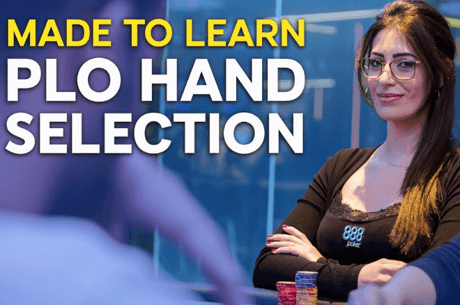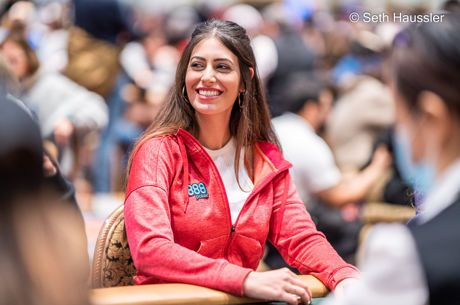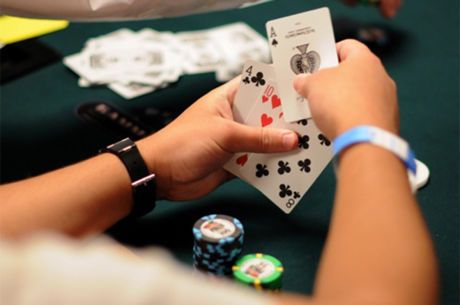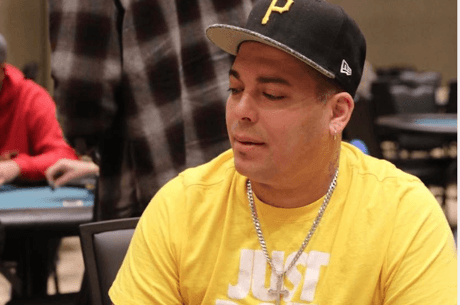Playing Pocket Aces in Pot-Limit Omaha

We all know pocket aces are the best starting hand in Texas hold'em. When we are dealt A-A in a cash game or tournament, we are always eager to start building a pot preflop with raises and reraises.
In pot-limit Omaha, however, being dealt two aces among your four starting cards doesn't always produce the same sort of enthusiasm to encourage getting our chips in the middle.
It's true that most PLO players rate A-A-K-K double-suited as the best starting hand, with A-A-J-T double-suited also ranked near the top. In fact, two aces appear in many strong starters in pot-limit Omaha, although like other good PLO starting hands they appear in hands where all four cards are "working together" in some fashion to create multiple strong two-card combos.
Position, stack sizes, and other factors also matter, of course, when it comes to preflop strategy in PLO and deciding whether or not to start committing chips with your A-A-x-x hand. And in tournaments, the nearness of the bubble and/or the payouts if already in the money are also going to be considered.
I bring up the subject of playing pocket aces in PLO after having watched Day 4 of the Event #58: $50,000 Poker Players Championship last night on .
After having played in 8-game mixed event and busted on Day 3 shy of the cash, Prahlad Friedman joined Ali Nejad in the booth to provide some analysis. The bubble had burst, and with 12 left playing on two six-handed tables Friedman commented on Shaun Deeb's cautious approach after getting dealt A♥A♦K♦10♠ in a pot-limit Omaha hand versus Dan "Jungleman" Cates.
Here's a look at the hand, along with Friedman's commentary:
Prahlad Friedman Has PLO Problems with Shaun Deeb
— PokerGO (@PokerGO)
To review the action, the blinds were 12,000/24,000 when it folded around to Deeb in the small blind. Phil Ivey was still in 4.37 million, then chip leader both at the table and overall. (There were in fact 12 players left, not 11.)
Looking down at A♥A♦K♦10♠, Deeb had about 2.37 million to start and chose just to complete from the small blind. Cates had just over 1.91 million to begin and from the big blind he looked down at a nice starting hand himself, K♠Q♣J♥10♥, and raised pot to 72,000.

Nejad anticipated Deeb repotting it, but he chose just to call the raise, and the flop came 4♦10♣7♦. With the nut flush draw Deeb checked and Cates checked behind.
Both also checked after the 5♠ turn, then the A♣ came on the river to give Deeb top set. He checked again, Cates checked behind, and Deeb won the small pot.
"I want to know where the rest of that pot was," chimed John Esposito after seeing the players' hands. As play continued, Friedman continued his critique of Deeb's play.
While there were multiple opportunities for Deeb to have bet or raised in the hand, being out of position he chose not to do so. Let's go back for a moment to preflop — and to the general question of aces' value in PLO.
Jeff Hwang has authored multiple books on PLO strategy. In his first, Pot-Limit Omaha Poker: The Big Play Strategy, he includes a chapter on starting hands and preflop strategy in which he devotes a section to "AA Hands." There he divides A-A-x-x hands into three categories: Speculative, Premium, and Magnum.
The "Speculative" category includes hands "with one-way potential or limited multi-way potential." That would include hands in which the aces only interact with one other card with the other being a "dangler" like A♠A♥7♠2♦, or those with "bare aces" or "naked aces" like A♦A♣9♥6♠ in which the aces don't interact with either of the other two cards.
The "Premium" category includes double-suited aces like A♣A♦9♣5♦, aces with two Broadway cards like A♣A♦J♠10♥, or aces with two connecting cards or a second pair.
The "Magnum" category are the "ultra-premium aces" — i.e., those that are double-suited and have a couple of other Broadway cards such as A♣A♦J♣10♦.
Hwang advises players can see a flop with any of these hands, though with the "Speculative" aces he does not recommend raising them preflop. Meanwhile "Premium" aces are "good raising hands, particularly from late position," and "Magnum" aces are "a raising hand from any position."
Deeb's starting hand of A♥A♦K♦10♠ wasn't quite in the "Magnum" category, although it was firmly in the "Premium" category being single-suited and having two Broadway side cards. It's worth pointing out, by the way, that when assessing suitedness in PLO, having both the ace and king of a suit is generally less preferable than having the ace and a lower card, since by having the king you block opponents from making a king-high flush.
There were numerous other factors in play here, too, including that the hand took place in a tournament where they had reached the money and the final table was nearing. The fact that it was a mixed-game tournament and not PLO-only is also significant. And Ivey's presence at the table with a stack nearly twice what Deeb and Cates both had surely mattered, too. (Ivey later busted in eighth.)
In any case, Deeb chose a cautious route both before and after the flop, not wanting to inflate a pot from out of position even with such a strong starting hand. We know what Friedman thought of that approach. What are your thoughts on the hand, or on playing aces in PLO?
Be sure to follow all of the action from the final table of the $50,000 Poker Players Championship today on PokerNews where Deeb, Cates, and Esposito will return to join Bryce Yockey, Phillip Hui, and chip leader Josh Arieh to comprise the final six.









